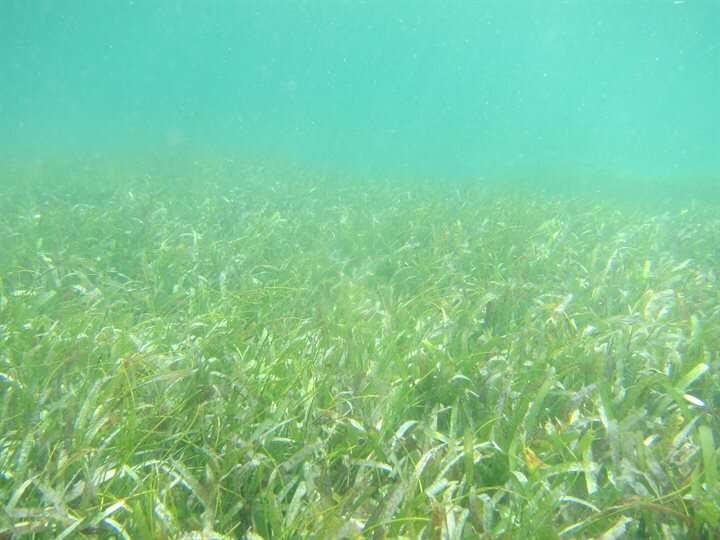After years of decline, some European seagrass meadows show signs of recovery

European research has found that a third of European seagrass was lost to disease, declining water quality and coastal development, chiefly during the 1970s and 1980s. However, since the late 20th century that decline has been gradually slowing and in some places seagrass meadows are recovering as a result of EU measures to improve water quality. The findings, made by European scientists including Marieke van Katwijk at Radboud University, have been published in Nature Communications.
"Seagrass provides a breeding habitat for fish, while also capturing carbon and enabling sediment to stabilize," says Marieke van Katwijk, an environmentalist. "Without seagrass, water quality declines much more rapidly." The threatened plant is becoming increasingly scarce in Europe. However, this research reveals that there is hope for its future, as seagrass meadows are already showing signs of recovery in some parts of Europe.
The Wadden Sea in 1869
The researchers used data from 737 sites along the coast of 25 European countries. It even included a map of the Wadden Sea in the Netherlands, from 1869. "Seagrass was commercially important to the Netherlands at that time," says Van Katwijk. "It was used for insulation and mattresses. People would wear leather waders to mow the seagrass. In 1869, a civil servant spent the whole summer sailing around the western Wadden Sea, including what was then the Zuider Zee, and used triangulation and church towers to record the seagrass. This resulted in a "Report to the King' with a precise mapping. Unfortunately, the seagrass recorded on that map is now gone. The highest rate of seagrass loss in Europe can be found in the Netherlands."
The overall picture is therefore a little less positive for the Netherlands. "It's good news for Europe as a whole, but a lot of work is still needed in the Netherlands. The seagrass levels are stable, but very low," according to Van Katwijk. Planting of seagrass has been planned for Lake Grevelingen [Grevelingenmeer] in Zeeland, in the south-west of the Netherlands. "It was lost around 1990 at that particular site. Planting is difficult. There are far more crabs and algae, so the food chain looks to have been disrupted."
The success of the North German Wadden Sea
The North German Wadden Sea has seen the highest levels of recovery within Europe. This is the result of a different, faster growing species of seagrass. "There was some eutrophication there, but less than in the Netherlands, and in recent decades it has declined even more. The Western Wadden Sea in the Netherlands has a very different structure, being much deeper and with fewer mudflats. In this western area of the Wadden Sea there are a few sites where recovery of a deep-growing species of seagrass (the species seen in 1869) would be possible, but much less of the shallow species. However, the eastern part of the Dutch Wadden Sea is more like the North German area. It has lots of mudflats but is also more eutrophic. This is due to agriculture, but also because we happen to be at the mouth of the Rhine, which is always full of nutrients. It's therefore unlikely that we'll be able to replicate the success seen in Germany. But we should certainly be able to improve on what we have now," says Van Katwijk.
More information: Carmen B. de los Santos et al. Recent trend reversal for declining European seagrass meadows, Nature Communications (2019).
Journal information: Nature Communications
Provided by Radboud University
















